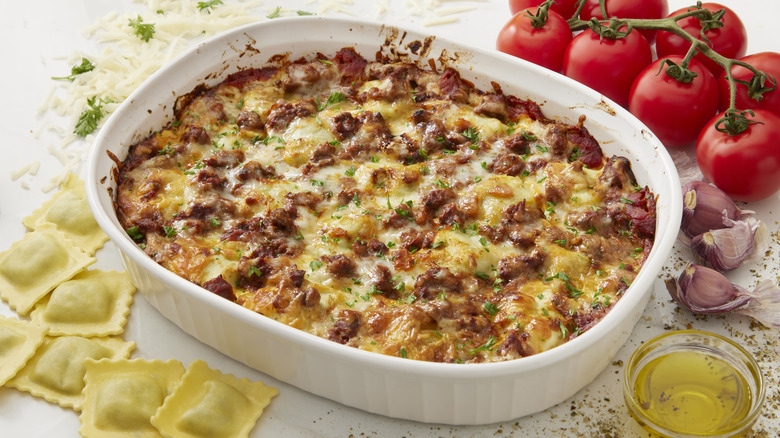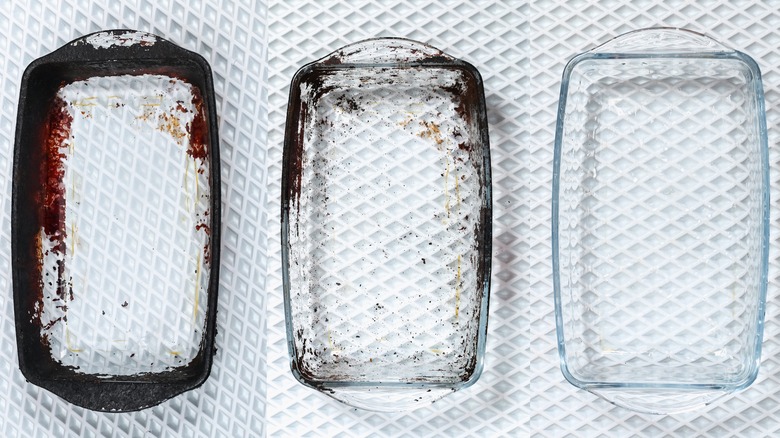Not Greasing Your Baking Dish Is A Casserole Disaster
So, you want to whip up a crowd-pleasing casserole for a party or potluck. While you're gathering the recipe's ingredients, just don't forget to grab the butter, oil, or cooking spray. While these may seem trivial, omitting a fatty coating when prepping your baking dish is no small oversight. In fact, failing to do so is a common casserole mistake that could lead to a kitchen catastrophe. "Moisturizing" your vessel is an essential step in casserole preparation that often goes unnoticed — until it's time to eat. If you fail to coat your baking dish beforehand, the edges of your food may cling stubbornly, and its once beautiful layers can easily become torn and mangled.
The primary purpose of greasing your baking dish is to create a barrier between the pan's surface and the food you're cooking. Fats and oils are hydrophobic, meaning they repel water. These lipids' hydrophobic nature helps prevent food from sticking to the pan. This basic rule of chemistry not only safeguards the casserole's visual appeal, it also impacts the taste — when this vital cooking tip is ignored, inadvertently or otherwise, the crust becomes excessively crispy (or downright burnt) rather than perfectly browned.
Avoid this casserole calamity
First and foremost, it's imperative to master the art of greasing. The most tried-and-true method involves using a pastry brush or a folded paper towel to spread an even layer of oil or butter all over the inside of the baking dish. This technique allows the casserole to be released from the dish seamlessly after cooking. Greasing also helps protect the material from wear and tear and makes cleanup exponentially easier (especially if you have some trusty baking soda on hand).
It's also important to understand that particles of certain casserole ingredients are notorious for adhering to glass and porcelain. For instance, some cheeses, when melted, transform into formidable, gluey substances that harden when cooled. Starchy components like pasta, oats, and rice are also prone to clinging, thereby making the removal process far more challenging than it has to be. A thin coating of butter, oil, or the fatty substance of your choice has the power to make or break the outcome of your dish.

